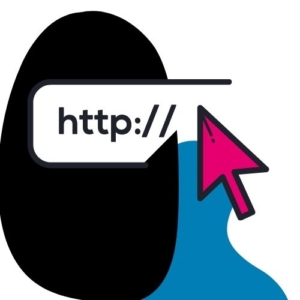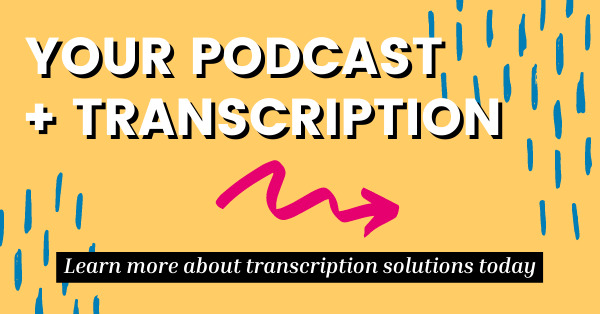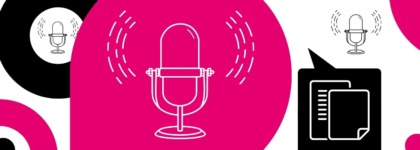6 Tips for Improving Podcast Accessibility
Updated: July 15, 2022
Podcasting continues to surge in popularity, making podcast accessibility even more important.
With more than two million active podcast shows in 2021 – and more than 800,000 having launched in 2020 – podcasts have become a dominant source of entertainment, news, conversation starters, and welcomed time-wasters for more than two-fifths of Americans.
Due to a low barrier to entry, minimal equipment needs, and growing interest in the medium, it’s no wonder why both businesses and individuals have started producing their own podcasts. For businesses in particular, podcasting breaks down the barriers between the voices of the company and those in their intended markets, effectively helping to build trust, credibility, and brand loyalty among listeners.
That said, podcasting in its simplest form is exclusionary to the more than 10 million Americans who are deaf or hard of hearing. Audio-only content cannot always be consumed or enjoyed by those in this group, and the problem is only exacerbated when there’s poor audio quality or when hosts mumble or speak over each other.
Tapping into the increasing interest for podcasts can be a smart move – but to fully capitalize on demand, podcast accessibility should be top of mind.
Here are six simple yet effective ways to make your podcast more accessible.
1. Ensure you have an accessible website

Fortunately, there are quick fixes to make a website more accessible. These steps include:
- Making forms accessible. If you’re starting an email list to alert subscribers about new episodes, sign-up forms need to be labeled for screen readers to pick up on them and fields must be navigable with a keyboard.
- Organizing content with headers. Screen readers rely on headers to better understand and navigate a page. If you’re promoting a podcast on a blog post – or even on a dedicated podcast landing page – headers make finding and accessing audio content much simpler.
- Using descriptive link anchor text. Another benefit to those using screen readers, descriptive link text is a direct way to prompt action. Be specific and use clear prompts such as “click here to listen on Apple Podcasts.”
2. Publish with an accessible media player
For a podcast to be enjoyed by all, the program should be available on an accessible media player.
Accessible players assist those who may have difficulty navigating media player controls. A player that meets basic accessibility requirements might include the following features:
- Clear labels for any buttons or controls on the player (play, pause, skip ahead 30 seconds, etc.).
- The ability to navigate to (and activate) controls via keyboard.
- Ensuring media does not autoplay.
An accessible media player is also a key component of an aforementioned accessible podcast website. Wistia and QCast are good options to explore here.
3. Include a transcript
Transcripts are readable, text-based versions of your podcasts. These transcripts can be linked on your podcast website or in the description for each episode’s upload to your show’s RSS feed.
Rather than type out the back-and-forth of podcast participants word-for-word, you can use podcast transcription software to transcribe the contents of an episode automatically. These text-based versions of your show also offer SEO benefits and boost a podcast’s discoverability on search engines like Google.
And don’t forget – these perks are in addition to the clear accessibility benefits of transcribing podcasts. For some examples of real podcasts using transcriptions in inventive and awareness-driving ways, check out this blog post.
4. Offer alternative methods for consuming podcast content
The beauty of podcast content is in how effortlessly it can be repurposed for other types of marketing material.

Regardless of what video you capture and repurpose, remember to always add captions to your podcast videos. Aside from those deaf or hard of hearing, captions also benefit those who may be in an area where listening to audio content is difficult, speak English as a second language, or need captions to maintain focus.
Finally, you can also turn transcripts into blog posts and use quotes from the show for custom graphics in social media posts. This ability to utilize podcast content for multiple purposes – and across multiple mediums – helps to extract even more value from your podcast program.
5. Provide a clear audio recording

Fortunately, you don’t need an expensive, professional, soundproof studio to record episodes. Some quick tips for optimizing audio quality include:
- Using dependable microphones, like the Yeti Blue – which only costs around $130.
- Adding pop filters to your microphones to mitigate audio peaks. They’re less than $10 on Amazon.
- Asking all participants to speak clearly and not speak over each other.
- Leveling out your audio after recording so sound is normalized.
- Ensuring guests who call in to your show follow the above steps as closely as possible for optimal podcast guest recording quality.
6. Employ accessible marketing
Once a podcast is made accessible, you can promote it to its now-wider potential audience.
That said, it’s important to follow through and ensure any marketing for an accessible podcast is also accessible. This means promotional images should be designed with the proper color contrast and include alt-text when posted online. You can use a color contrast tool like WebAIM to determine if the image’s contract adheres to WCAG.
Further Reading

Subscribe to the Blog Digest
Sign up to receive our blog digest and other information on this topic. You can unsubscribe anytime.
By subscribing you agree to our privacy policy.





